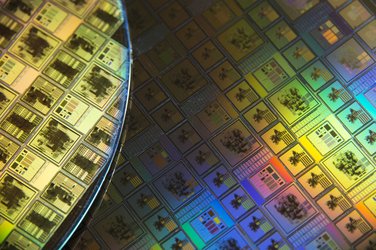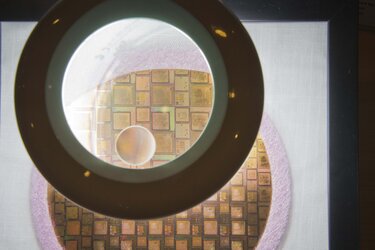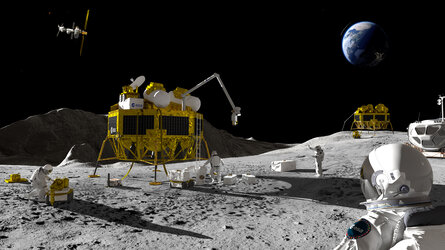Accept all cookies Accept only essential cookies See our Cookie Notice

About ESA
The European Space Agency (ESA) is Europe’s gateway to space. Its mission is to shape the development of Europe’s space capability and ensure that investment in space continues to deliver benefits to the citizens of Europe and the world.
Highlights
ESA - United space in Europe
This is ESA ESA facts Member States & Cooperating States Funding Director General Top management For Member State Delegations European vision European Space Policy ESA & EU Space Councils Responsibility & Sustainability Annual Report Calendar of meetings Corporate newsEstablishments & sites
ESA Headquarters ESA ESTEC ESA ESOC ESA ESRIN ESA EAC ESA ESAC Europe's Spaceport ESA ESEC ESA ECSAT Brussels Office Washington OfficeWorking with ESA
Business with ESA ESA Commercialisation Gateway Law at ESA Careers Cyber resilience at ESA IT at ESA Newsroom Partnerships Merchandising Licence Education Open Space Innovation Platform Integrity and Reporting Administrative Tribunal Health and SafetyMore about ESA
History ESA Historical Archives Exhibitions Publications Art & Culture ESA Merchandise Kids Diversity ESA Brand CentreLatest
Space in Member States
Find out more about space activities in our 23 Member States, and understand how ESA works together with their national agencies, institutions and organisations.
Science & Exploration
Exploring our Solar System and unlocking the secrets of the Universe
Go to topicAstronauts
Missions
Juice Euclid Webb Solar Orbiter BepiColombo Gaia ExoMars Cheops Exoplanet missions More missionsActivities
International Space Station Orion service module Gateway Concordia Caves & Pangaea BenefitsLatest
Space Safety
Protecting life and infrastructure on Earth and in orbit
Go to topicAsteroids
Asteroids and Planetary Defence Asteroid danger explained Flyeye telescope: asteroid detection Hera mission: asteroid deflection Near-Earth Object Coordination CentreSpace junk
About space debris Space debris by the numbers Space Environment Report In space refuelling, refurbishing and removingSafety from space
Clean Space ecodesign Zero Debris Technologies Space for Earth Supporting Sustainable DevelopmentLatest
Applications
Using space to benefit citizens and meet future challenges on Earth
Go to topicObserving the Earth
Observing the Earth Future EO Copernicus Meteorology Space for our climate Satellite missionsCommercialisation
ESA Commercialisation Gateway Open Space Innovation Platform Business Incubation ESA Space SolutionsLatest
Enabling & Support
Making space accessible and developing the technologies for the future
Go to topicBuilding missions
Space Engineering and Technology Test centre Laboratories Concurrent Design Facility Preparing for the future Shaping the Future Discovery and Preparation Advanced Concepts TeamSpace transportation
Space Transportation Ariane Vega Space Rider Future space transportation Boost! Europe's Spaceport Launches from Europe's Spaceport from 2012Latest

Chang’e-4 lander
Thank you for liking
You have already liked this page, you can only like it once!
At a time when ESA is looking forward to future lunar exploration, it turns out there is already some small but crucial ESA-supported hardware in operation on the far side of the Moon.
China’s Chang’e-4 lander is running on a LEON2-FT microprocessor core, especially designed for space missions by European industry with close ESA support and sold commercially by the Microchip company – marketed as the AT697.
The ordinary computer chips you use every day in your phone or laptop would be rapidly degraded by the radiation and environmental extremes of space. Specialised chips are therefore essential for spacecraft
Chang’e-4 touched down inside the Von Kármán crater on the Moon’s far side near the south pole on 3 January 2019. The lander and the rover it delivered are currently hibernating during the lunar night, having survived seven month-long lunar days so far.
“Most ESA missions launched after about 2010 include at least one LEON chip, and hundreds of these radiation-hardened off-the-shelf chips have also been sold to space missions both in Europe and around the globe,” explains ESA microelectronics engineer Agustin Fernandez-Leon.
“This number increases to the thousands if we additionally count customisable fully programmable gate arrays using LEON cores,” adds ESA microelectronics engineer Roland Weigand. “The overall scale of usage is such that it is impractical to keep track of all the missions making use of our microprocessor technology, but it is always nice to find out.”
Israel’s ill-fated Beresheet lander – which made it most of the way to the lunar nearside before crashing –similarly utilised a GR712RC microprocessor, powered by two LEON3 cores. In this instance their design was not developed with ESA but privately funded by Sweden’s Cobham Gaisler company, advancing the existing LEON architecture.
ESA’s Microelectronics section is currently working with Cobham Gaisler on the Next Generation Microprocessor, a quadcore design – common in modern games consoles, laptops, and mobile phones – that combines four embedded LEON4 processor cores, commercialised as the GR740.
-
CREDIT
CLEP/Planetary Society -
LICENCE
ESA Standard Licence

GR740 next-generation microprocessor

Inner space engineering

Space chips etched in silicon

Smart chips for space















 Germany
Germany
 Austria
Austria
 Belgium
Belgium
 Denmark
Denmark
 Spain
Spain
 Estonia
Estonia
 Finland
Finland
 France
France
 Greece
Greece
 Hungary
Hungary
 Ireland
Ireland
 Italy
Italy
 Luxembourg
Luxembourg
 Norway
Norway
 The Netherlands
The Netherlands
 Poland
Poland
 Portugal
Portugal
 Czechia
Czechia
 Romania
Romania
 United Kingdom
United Kingdom
 Slovenia
Slovenia
 Sweden
Sweden
 Switzerland
Switzerland

























